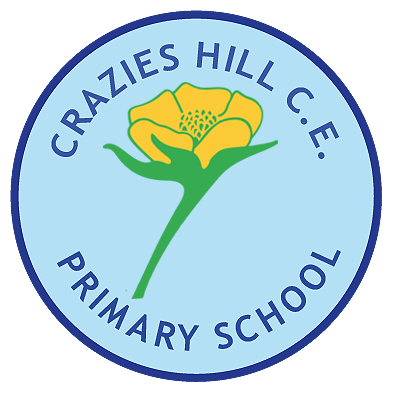Phonics - Reading Schemes
Read Write Inc Phonics Scheme
Read, Write, Inc is the phonics scheme we use to teach reading and spelling in Early Years and Key Stage One. We have chosen Read, Write, Inc because it provides a well sequenced scheme and a variety of engaging resources for the children to develop their early reading skills. Evidence suggests Read, Write, Inc enables children to make good progress in their reading as well as develop a love of reading.
This video, taken from the Ruth Miskin website, explains the scheme in more detail:
Teaching Phonics at Crazies Hill
We start teaching the programme in your child’s Reception year and then continue until they have worked their way through the whole reading scheme, usually this is during Year One or Two. We assess all children's progress regularly, to ensure that they are receiving the appropriate teaching and reading materials for their reading ability. Where children are making less progress than we would hope, we provide one-to-one tutoring for the child in accordance with the Read, Write, Inc scheme, to help them make rapid progress in line with their peers. Daily phonics lessons (30 mins) in Key Stage 1 are taught by either teachers or Teaching Assistants who have had Read, Write, Inc phonics training; in utilising so many staff, we can ensure that groups are kept as small as possible and that the teaching the children receive is tailored to their needs.
Children begin by learning the Set 1 sounds in a specific order. They also begin learning to blend sounds together to make words after learning the first 5 sounds, firstly through practising oral blending. Then, when they can blend independently, they progress on to reading green words.
As soon as children can read green words, they begin to read stories in their Read, Write, Inc sessions. Each storybook is matched to the sounds they can already read, which sets them up for success and helps to build their confidence with reading. It is through these storybooks that we teach children red words, which are irregular words that are not phonetically plausible and cannot be sounded out (Fred talked). Each storybook is taught in the same way, with children practising reading the green words in the story and also the red words, before they begin to read the book. Children will then read the book several times to help build their fluency and comprehension skills.
How to help at home
Read to your child
Even if your child is not yet reading words, it is so important to read stories to them. The film below explains the benefits of reading to your child:
There are also some things to think about when reading to your child:
You have not allowed cookies and this content may contain cookies.
If you would like to view this content please
Fred Talk
To expose your child to the idea of blending sounds together to make words, break down the words of the simple vocabulary you often use at home. For example, “please pass me that c - u - p”, “let’s sit on the r - u - g”. This will help your child to practise their oral blending as they can repeat the sounds back to you and then say the word.
Building Vocabulary
Children need a rich vocabulary in order to develop high levels of comprehension. The more words your child has in their vocabulary, the more they will understand when they read. You could try using alternative words for things at home, rather than saying you are pleased that they have tidied their toys, you could say that you are delighted, ecstatic, overjoyed.
Reading with your child
Your child will bring home reading books to share with you:
- a book which corresponds to the sounds/level in Read, Write, Inc sessions
- an additional phonetically decodable book (Fiction/Non-Fiction- in line with class teaching/topics)
- a book linked to their topic of learning and/or reading level
- a library book
When helping your child to decode words at home, it’s really important to pronounce the sounds correctly. Here is a helpful guide to show you how we are teaching your child to pronounce the sounds:
You have not allowed cookies and this content may contain cookies.
If you would like to view this content please
